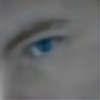HOME | DD
 MattMart — Sinosauropteryx prima
MattMart — Sinosauropteryx prima

Published: 2010-09-11 09:08:27 +0000 UTC; Views: 10747; Favourites: 151; Downloads: 0
Redirect to original
Description
Three specimens referred to Sinosauropteryx:1. NIGP 127587 (referred specimen, young adult)
2. GMV 2123 (holotype, juvenile)
3. GMV 2124 (S.? sp., adult)
The colors of S. prima proper are based on the paper Zhang, F., Kearns, S.L., Orr, P.J., Benton, M.J., Zhou, Z., Johnson, D., Xu, X. and Wang, X. (2010). "Fossilized melanosomes and the colour of Cretaceous dinosaurs and birds." Nature, 463: 1075-1078
Size of S. sp, which is probably a distinct genus based on proportional differences, follows the measurements given in Ji, Q., and Ji, S. (1997). "Advances in Sinosauropteryx Research." Chinese Geology, 7: 30-32.
Related content
Comments: 28

Not necessarily, we don't have any fledglings to go by - even the "immature" might actually be a sexually mature young adult. But most non-avian dinosaurs seem to have been at least semi- precocial, including enantiornithes, so it's a reasonable guess.
👍: 0 ⏩: 1

Glad to Hear that !
Several Sauropod's already ruined the 'good parent' dinosaur profile; enantiornithes're really confusing that there's evidence for immense Colonial nesting; so the group is really Odd -in best terms
👍: 0 ⏩: 0

On the modern birds the colors of feathers are changing as they grew, so thats quite possible that those 3 specimens shows something very similar.
👍: 0 ⏩: 0

Your drawing makes these things' relationship to Tyrannosaurs really obvious, in a good way.
👍: 0 ⏩: 1

Thanks! will be interesting to see how things shake out phylogenetically. Could be the digit reduction is simple convergence, as Dilong is more normal in that respect. Or maybe Longrich is right and this thing is a carnosaur
👍: 0 ⏩: 1

Sinosauropteryx being an infinitesimal carnosaur? That'd be interesting! Where'd the idea come from?
👍: 0 ⏩: 1

Longrich discussed it at an SVP lecture a few years ago, but I'm not sure if the idea has ever been tested or supported by any phylogenetic analysis.
👍: 0 ⏩: 0

Beautiful, especially the cute juvenile holotype
Sure the tail of NGMC 2124 is comparable in length to that of Sino proper? IIRC, it's got a mere 40 vs. 64 caudal verts :/
👍: 0 ⏩: 1

Definitely not! I had to shorten it a bit in the drawing, though it appears longer since NGMC 2124 has a noticeably long tuft of feathers at the tip (unless those are displaced, which is possible as there are lots of displaced feather patches on the slab). I went a bit conservative with the tail length in the adult, as the distal caudals are tiny so they may not have appeared as long as in the juvenile. But of course, the tails of those adult specimens are incomplete.
👍: 0 ⏩: 1

Ah, so the tail tip is mostly long protofeathers. Sry for my uninformed nitpick - I didn't know the details of NGMC 2124's integument.
👍: 0 ⏩: 0

I don't remember Juravenator having a scaled underbelly only what look like scales around the tail.
👍: 0 ⏩: 0

Chose not to add a scaled underside as in Juravenator?
👍: 0 ⏩: 1

Nah, not until some positive evidence for scales in these species turns up. Longrich hypothesized that they were counter-shaded with feathers on the belly. Still, I purposely didn't add much detail o the underside, so it could be interpreted as naked skin (or ill-defined scaly hide) if you so choose.
👍: 0 ⏩: 1

Fair enough. I basically accept Juravenator as evidence until we are shown otherwise.
👍: 0 ⏩: 1

Fair enough. But we should also acknowledge the differences. For example, Juravenator preserves scales along the tail base, which is feathered in Sinosauropteryx. Compsognathus also preserves scales on the mid-distal tail. So whatever was going on, Sinosauropteryx definitely had more feathers on the tail, at least, than other "compsognathids".
👍: 0 ⏩: 2

Seems like more scales may be a bit more likely with the new Juravenator paper.
👍: 0 ⏩: 1

Yeah I may update these basal coelurosaurs at some point to have more scales. But honestly, the original argument that nobody seems to know or care what all these various "compsognathids" actually are and what they're related to still stands. AFAIK a really good phylogenetic study focusing on compies has never been done. People just throw in a few random taxa when testing other groups.
👍: 0 ⏩: 1

That is true. It applies to the other basal coelurosaurs such as Dilong as well. Its kind of hard to see where they all stand, as no study has been done on the subject and frankly, they all look very similar.
👍: 0 ⏩: 0

In spite of having short arms those claws look quite nasty.
👍: 0 ⏩: 0

Very nice as usual, keep this series coming! It's kind of different how you buried the upper arm among the body feathers, though I suppose not necessarily wrong.
👍: 0 ⏩: 0

























